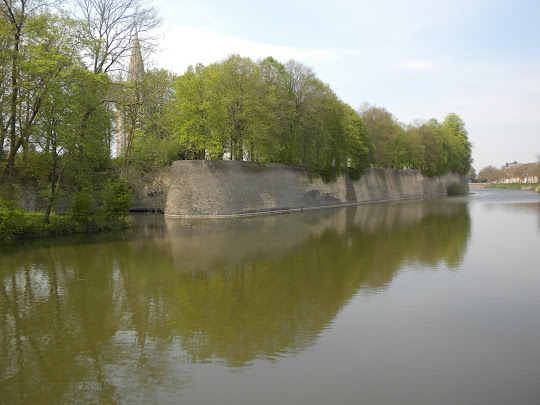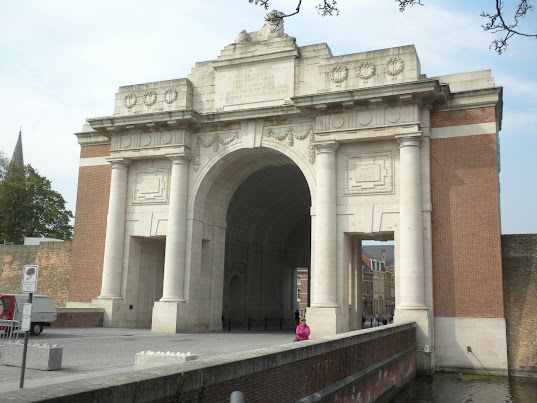“Known Unto God” …inscription on the headstones
of unidentified fallen in Tyne Cot Cemetery
Al
writes: There were many horrific
battlefields in WWI and one of the worst was in Belgium in the area of Flanders
Fields or, specifically, Passchendaele and Ypres. After the original
thrusts of the German Army were blunted in Belgium and northern France, the
ground between the Allies and the German forces in Western Europe was
transformed into a series of trenches and fortified concrete bunkers.
These fortifications covered a narrow band of ground from the North Sea
to Switzerland and, thus, all of the fighting in Western Europe was confined to
this narrow band. The British Expeditionary Army was responsible for the
Belgium portion of this line and that is where they suffered the vast majority of
their casualties in WWI.
This
area of western Belgium is where we decided to pay our respects to the fallen
in WWI. The loss of life was unimaginable. In one 100-day offensive
period, the Commonwealth and the Germans suffered 500,000 dead, wounded or missing,
with the result of a gain by the British of only 8 kilometers. As a point
of reference, total dead in our Civil War was a little over 600,000. In
WWII, the US lost about 500,000.
Our first
stop was near Passchendaele at Tyne Cot Cemetery, the largest Commonwealth
cemetery in the world. It sits atop a gentle high ridge that was one of
the most strategic spots in this portion of the trenches.
The
centerpiece of the cemetery is a monument built over a concrete German
blockhouse.
The
back wall of the cemetery lists 35,000 names of British and New Zealand
soldiers that fell in the vicinity whose bodies were never recovered or
identified.
The Commonwealth War Graves Commission is responsible for the remembrance of 1,700,000 members of the Commonwealth who gave their lives in the two world wars. This organization built and maintains hundreds of monuments and cemeteries in the world. The British cemeteries are designed to replicate an English garden, and every headstone has some plant or flower in front of it. An enormous effort is required to plant and maintain these cemetery gardens. The German cemeteries are much more solemn and dark.
The town of Ypres was the center of the international cloth trade in the Middle Ages and had a larger population than London in the 14th Century. In the 17th century, encircling ramparts were built to fortify the city.
During the 1914-1917 battles, Ypres was totally devastated. Winston Churchill suggested that the area not be rebuilt and be kept as a monument to the folly of war. The Belgian inhabitants disagreed and decided to rebuild the city exactly like it was before the war.
In addition to many small cemeteries and monuments, Ypres also has the most famous of the Commonwealth War Memorials--the Menin Gate. Every night since it opened in 1927, the "Last Post Ceremony" has been conducted every evening at 8 PM. It is sort of like our "Taps". Carol and I attended but did not get very close because of the large international crowd which included many school groups. However, the haunting notes of bugles seemed to be an appropriate remembrance for the fallen. The memorial has over 55,000 names engraved on the walls to honor those whose bodies were never identified or recovered. School groups from the United Kingdom often leave a wreath of poppies, a flower which has come to be identified with this battlefield in the famous poem, "In Flanders Fields" by John McCrae.
In Flanders
Fields the poppies blow,
Between the
crosses, row on row,
That mark
our place; and in the sky,
The larks,
still bravely singing, fly,
Scarce heard
among the guns below.
“In Flanders Fields”
by John McCrae














No comments:
Post a Comment